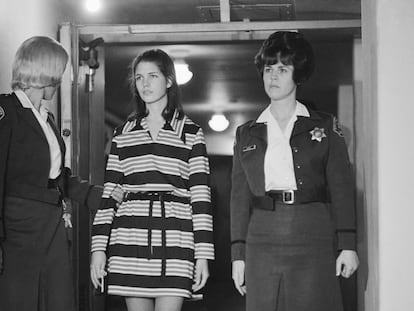Murder houses: The difficulty in selling properties that were deadly crime scenes
An architectural jewel in the Hollywood Hills that after ten years on the market keeps dropping in price and is not for sale. The reason? Sharon Tate lived (and died) in it
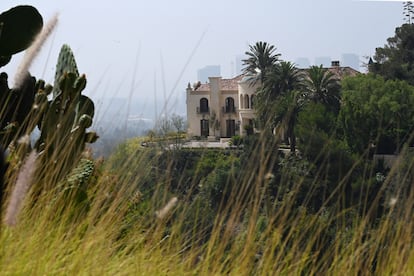

Trent Reznor was the last tenant of 10050 Cielo Drive. The founder of the legendary industrial rock band Nine Inch Nails set up his recording studio and lived sporadically at this luxury Los Angeles estate in the Benedict Canyon neighborhood in 1992.
In a 1997 interview, Reznor bluntly acknowledged that he had come to the place attracted by its dark legend: it was there, on the night of August 9, 1969, that members of the Manson Family murdered Sharon Tate and four of her guests in what remains, 54 years later, one of the most celebrated crimes in history. “At the time,” the musician admitted in a chat with Rolling Stone, “With much of America, I shared a morbid fascination with serial killers, with all the sick folklore that surrounds them. And Manson, who was still granting delusional interviews and recording music from his Corcoran prison cell, was irresistible to me.”
Reznor nonetheless found it annoying “living in an isolated place on top of a hill where very dubious-looking guys would come in the early hours of the morning to make strange offerings or sing Manson songs at the top of their voices.” In December 1993, a chance meeting with Debra, Sharon Tate’s younger sister, made him realize once and for all that moving there had been a lousy idea: “She asked me if I wasn’t sinisterly and morbidly exploiting her sister’s death, and I had to admit that yes, it was intolerably frivolous to contribute to mythologizing a part of American history that had caused so much pain, that Manson’s victims and his people were real human beings who in no way deserved what happened to them.”
Cursed places
Today, 10050 Cielo Drive no longer exists. The 1940s mansion in which Tate was stabbed 16 times was demolished shortly after Reznor returned the keys. The new owners of the site replaced it with a 1,600-square-meter (17,222 square-foot) mansion with nine bedrooms and 13 bathrooms. Finally, in 2010, they requested a change of management to erase, as far as possible, the traces of infamy.
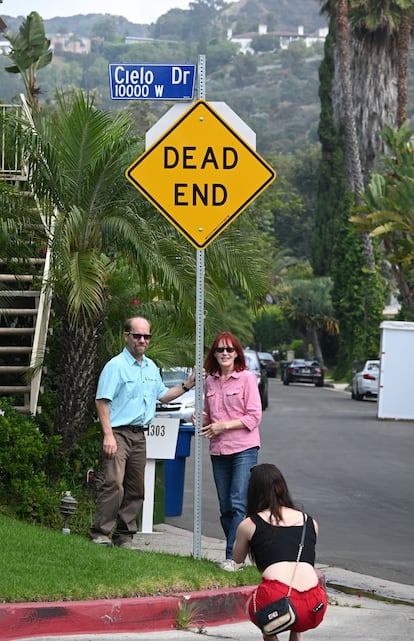
As a result, today, the number between 10048 and 10052 Cielo Drive is not 10050, but number 10066, the last number on the street. It has been on the market for more than ten years and has steadily dropped in price since then: $97 million in 2019, $85 million in January 2022 and less than $70 million after the latest repricing. Architectural Digest magazine considers that it could prove to be a “magnificent” investment were it not, of course, “because it is a cursed place whose funereal legend almost no one wants to be associated with anymore.”
It is of little use for its current owner, producer Jeff Franklin, to claim that “there is not a brick, not a blade of grass, left of the environment in which Tate was killed: this is a completely different place, a luxury mansion in a dream location.” Alyssa Fiorentino, editor of U.S. House Beautiful magazine, recalls that Franklin bought it in January 2000 for a modest $6 million and has invested a veritable fortune in making it “one of the jewels in Benedict Canyon’s real estate crown.” Perhaps Franklin missed a fact: in a 1997 survey, 87% of Los Angeles residents stated that “under no circumstances” would they be willing to live in a place where such a notorious crime had been committed. And the remaining 13% apparently do not have $70 million.
Living where others have killed
In a splendid article in The Guardian, Francisco Garcia proposes a tour of the “crime houses” of the United Kingdom, the places where “some of the darkest and most macabre misdeeds” in the country’s history were perpetrated. It begins in Dundee, Scotland, where a 29-year-old “roving killer,” Henry Gallagher, beat an octogenarian couple to death in the spring of 1980. He then suggests Cranley Gardens, London, home in of the sinister slaughterer Dennis Nilsson, perpetrator of at least 15 murders between 1978 and 1983. And the lavish residence where Lord Lucan beat young Sandra Rivett, his children’s nanny, to death in 1974.
Garcia has noted that “some people who ignore or pretend to ignore what happened in them” live in many of those unfortunate addresses today. But there are also others who downplay the issue, using arguments such as that the probability of a crime being committed in a place where another has already been committed is “the equivalent of winning the lottery more than once.”
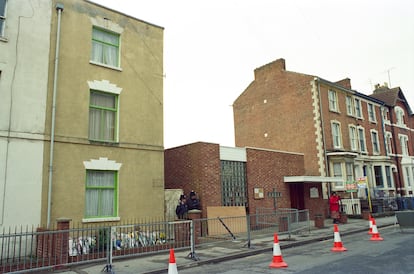
There are also those who say they feel “bad vibes” in these places that they did not take into account when they moved there. Or those who claim, like the new tenants of 25 Cromwell Street, Gloucester, where the serial killer couple Fred and Rose West lived, that the original building was demolished, and that their current residence has little to do with the house where an untold number of teenagers were held, tortured, and murdered. Still, Garcia points out, the destruction of the original property does not deter “the hundred or so people who come to this corner of the South West every year for homicide tourism.”
We already know what the Angelenos were thinking in 1997. But the pertinent question (and Garcia is the first to ask it) is whether we would be willing, under certain circumstances, to live in the place where a heinous crime has been committed and, moreover, with a high media profile. Michael Connolly, a U.S. real estate consultant, has attempted to quantify that potential rejection. His conclusions are striking. Among the 13,000 people questioned by its digital advisory service, Money Saving Expert, 78% say they would refuse to buy a well-priced property that was “in a run-down or dilapidated state.” It thus ends the mystique of the line that opens all good haunted house horror movies: “We’ve found a bargain!”
76% would count it out it if it were in a flood-prone area. 75%, if the area had very high crime rates. 55%, if it had damp. Only 42% would reject it if “a very violent crime” had been committed there, and 23% if “a notorious criminal” had resided there. Connolly finds it significant that “houses in which there has recently been a brothel generate more rejection than the former homes of murderers,” perhaps because “in the former there is a risk that the former clients of the prostitutes will continue to come to the place, not knowing that sexual services have ceased to be offered there.” In other words, a vast majority of Americans would readily move into the place where a serial killer once lived, provided that his crimes had been committed elsewhere.
Spanish crime residences
In Spain, an exhaustive tour could also be made of the scenes of high-profile homicides. Many of the houses connected with criminality have not been reoccupied. This is the case of the famous number 9 Carrera street in Puerto Hurraco, the Badajoz district where Emilio and Antonio Izquierdo killed nine people on August 26, 1990 (yes, a lot of nines in the equation). The building is the place where one of the events that triggered the tragedy took place: the fire — it is not known if it was intentional — that took the life of the Izquierdo brothers’ mother in October 1986.
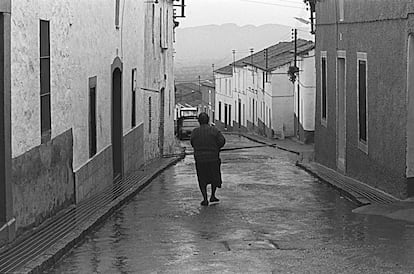
The house, according to recent testimony, remains as it was after the incident, in ruins, “like a dismantled accordion.” No one has considered restoring it and living in it, despite the fact that the town, 35 years after becoming a mecca for the more ghoulish of tourists, retains its hundred or so neighbors, many of them in one of those houses on Carrera street whose blood-spattered walls opened the news for weeks in the summer of 1990.
The house in Somosaguas, in Pozuelo de Alarcón (Madrid), where the Marchioness of Urquijo and her husband were assassinated in August 1980, has also been the object of curiosity. Juan de la Sierra, the youngest of the couple’s children, inherited the residence, tried unsuccessfully to sell it on several occasions and finally resigned himself to occupying it until he died in it in 2022, at the age of 63. His sister Myriam wrote in her memoirs that when she visited Juan in their parents’ old home she was unable to get past the second floor. The second, where the crimes were committed, still smelled of blood.
There is also no shortage of curious onlookers who, cell phone in hand, look for number 55 Atocha street in Madrid, the scene of a politically motivated crime (a right-wing commando assassinated five labor lawyers) that shocked Spain in January 1977. The estate was gradually emptied until it ran out of tenants around 2005. It was then thoroughly refurbished and brought to the market again, as a community “of 25 luxury homes in the heart of the Las Letras neighborhood,” as early as 2016. As is so often the case, it took considerable investment to erase the traces of the crime and try to breathe new life into the block.
There are also new tenants at 109 Fuencarral street, scene of the convoluted 1888 crime (rich victim, drugged maid in the next room, guard dog that did not bark, a suspect who fitted the stereotype of a gambling, decadent, and amoral little lord) that fuelled the emergence of the Madrid crime chronicle. But Spain’s particular 10050 Cielo Drive may be the farmhouse of Los Galindos, in the southern Spanish town of Paradas. In 1975, a multiple homicide with five victims was committed there, as in the Benedict Canyon mansion, along with its dose of gruesomeness and sordidness.
Forty-eight years later, who perpetrated the crime remains unclear and multiple conjectures continue to be put forward, ranging from a mafia settling of scores to a “crime of passion.” The estate is still in the hands, as recent newspaper reports have confirmed, of its long-time owners, whose employees guard the fence and tolerate, at best, a few photos from a safe distance. Sooner or later the morbid fascination will one day expire and the world will finally forget about the place where they live, or at least that is what the owners and tenants of these crime scenes hope.
Sign up for our weekly newsletter to get more English-language news coverage from EL PAÍS USA Edition
Tu suscripción se está usando en otro dispositivo
¿Quieres añadir otro usuario a tu suscripción?
Si continúas leyendo en este dispositivo, no se podrá leer en el otro.
FlechaTu suscripción se está usando en otro dispositivo y solo puedes acceder a EL PAÍS desde un dispositivo a la vez.
Si quieres compartir tu cuenta, cambia tu suscripción a la modalidad Premium, así podrás añadir otro usuario. Cada uno accederá con su propia cuenta de email, lo que os permitirá personalizar vuestra experiencia en EL PAÍS.
¿Tienes una suscripción de empresa? Accede aquí para contratar más cuentas.
En el caso de no saber quién está usando tu cuenta, te recomendamos cambiar tu contraseña aquí.
Si decides continuar compartiendo tu cuenta, este mensaje se mostrará en tu dispositivo y en el de la otra persona que está usando tu cuenta de forma indefinida, afectando a tu experiencia de lectura. Puedes consultar aquí los términos y condiciones de la suscripción digital.
More information
Archived In
Últimas noticias
Most viewed
- Sinaloa Cartel war is taking its toll on Los Chapitos
- Oona Chaplin: ‘I told James Cameron that I was living in a treehouse and starting a permaculture project with a friend’
- Reinhard Genzel, Nobel laureate in physics: ‘One-minute videos will never give you the truth’
- Why the price of coffee has skyrocketed: from Brazilian plantations to specialty coffee houses
- Silver prices are going crazy: This is what’s fueling the rally
